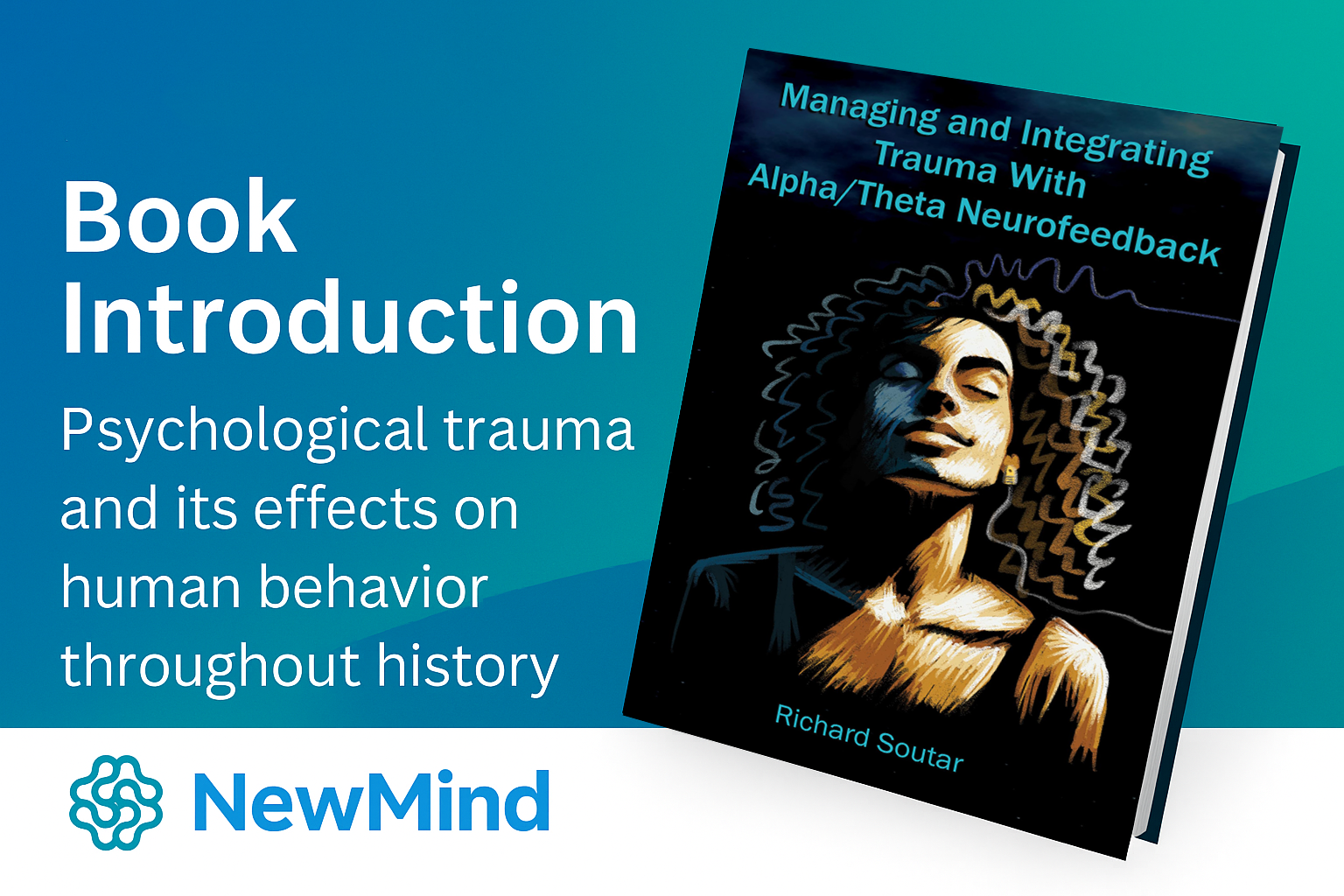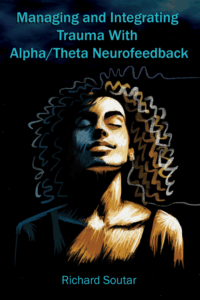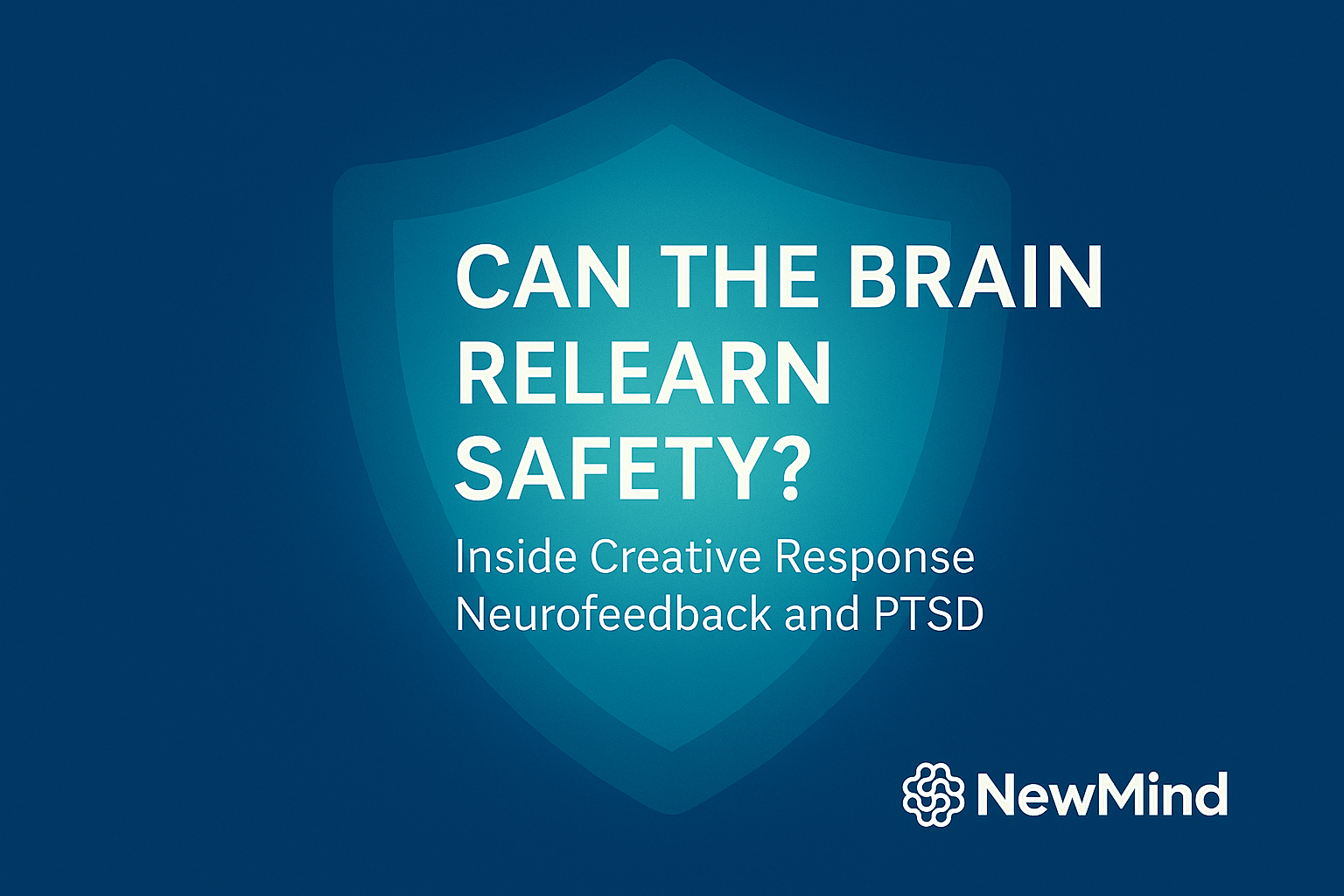Managing and Integrating Trauma with Alpha Theta Neurofeedback


Psychological trauma and its effects on the brain and human behavior have accompanied our species since the beginning. It has distorted and compromised generations of human functioning in countless ways, often with tragic consequences. Historically, trauma was a frequent outcome of war—so much so that ancient Greek generals documented concern over its effects on soldiers. Trauma has also marked populations suffering from pestilence, famine, and natural disasters. Its impact leaves psychological wounds that are both debilitating and enduring. It destabilizes families and disrupts the social order.
In contemporary psychology, we’ve come to understand that trauma’s effects may be passed down through generations via behavioral patterns and, increasingly, epigenetic markers in our RNA. Yet psychological trauma wasn’t widely recognized until World War I, when it emerged under the label “shell shock.” The first book on the subject was published during World War II in the 1940s.
Although trauma was acknowledged, it didn’t achieve formal psychiatric recognition in the form of PTSD until the mid-1980s. Complex trauma—a subtler form tied to emotional violence and chronic stress—was not formally addressed until the 21st century. At this point in time, it is evident that trauma has shaped and disordered human psychology and social structures in ways that are only now becoming visible. As it is increasingly recognized as a major factor in mental health, modern psychology is actively searching for more effective interventions, with growing public interest online.
Despite numerous therapeutic models, trauma has remained resistant to resolution. While Cognitive Behavioral Therapy and techniques like EMDR have achieved some success, many clinicians continue to seek alternatives with greater impact. One such alternative emerged in the 1980s: biofeedback and neurofeedback technologies. These tools showed promising early results and have been used by clinics in the U.S. and abroad ever since. Despite the success, neurofeedback has been largely overlooked by mainstream research, receiving limited funding and attention. Its complex interface between mind and machine, along with its technological profile, has also discouraged some clinicians. Nevertheless, the field has quietly advanced.
From the outset, neurofeedback’s clinical outcomes were often dismissed as placebo effects by critics with emotional, political, or financial ties to reductionist models of science. This skepticism—common when confronting innovations that challenge dominant paradigms—has slowed adoption. Neurofeedback, particularly EEG biofeedback, has faced an uphill battle but persisted. Some progressive researchers have conducted credible studies validating its results. Initially developed by a NASA scientist under experimental conditions, neurofeedback was adopted and refined by psychologists working with alcoholic veterans suffering from war trauma. Their success sparked interest from therapists across the country seeking effective tools for PTSD. Early adopters were few, just as formal PTSD diagnoses were still limited.
The form of neurofeedback used in those early interventions became known as Alpha Theta Training. I’ve used it for over 25 years to support individuals struggling with complex trauma and PTSD—often with striking results. Clients once paralyzed by trauma have experienced breakthrough integration and recovery. As I’ve taught Alpha Theta techniques through workshops across the U.S. and Europe, I’ve also integrated the expanding body of trauma research into the practice. For years, professionals have encouraged me to write a book detailing my approach so they can refer to it in their work.
This book is my answer to that request. It outlines how Alpha Theta neurofeedback functions behaviorally and neurologically. It offers a comprehensive scientific framework building on pioneers such as Nancy White and contrasts this approach with psychiatric models advanced by Nicholson, Ros, and van der Kolk. Instead, this model draws on the psychophysiological research of Bill Scott, Gruzelier and Egner, John Nash, Johnson & Bodenhamer-Davis, Tato Sokhadze, and others. It explains how Alpha Theta evolved, why it took its current form, and examines the reasoning of its developers. The model integrates biological, psychological, and sociological paradigms into a unified framework.
We reference Joseph LeDoux’s work on fear, Vinod Menon’s network theories of brain dysregulation, and Paul Nunez’s theories of NeuroPhysics. We incorporate systems theory and Barry Sterman’s arousal theory to explain why the brain naturally moves toward healing integration in the liminal state between waking and sleep. The explanation is grounded in findings from psychology, neuroimaging, and EEG research. The book includes chapters on recent developments in physiology, neurophysiology, electrophysiology, and systems theory as they relate to trauma.
This book also serves as a practical manual. It explains how to set up and use neurofeedback software and equipment, guiding readers step-by-step through training sessions. It describes how to create and apply visualizations during Alpha Theta training, interpret session data, and evaluate outcomes. Clinicians will learn how to observe real-time changes in a client’s mental and physiological state during trauma integration.
There is a section on EEG patterns associated with various trauma types observed by affiliated clinics over the decades, along with training strategies for each. The book presents examples of EEG trend screens, discusses common dilemmas in training, and provides matched qEEG maps to support treatment planning. Each stage of the session is discussed, along with common obstacles and how to address them. These practical insights are rarely addressed in detail in other sources but are critical for guiding clinicians through trauma resolution.
There is also a section on physiological confounds—such as metabolic issues, sleep disturbances, medication effects, and family system dynamics—that can interfere with training. Medications in particular can inhibit progress by blocking cortical pathways related to emotional processing. However, when medications are reduced in tandem with Alpha Theta training, clients can often access and integrate traumatic material more effectively, especially under the guidance of a trained therapist.
Another frequent outcome of trauma resolution is a turn toward spiritual exploration. This shift can take both therapist and client beyond traditional clinical work and into the transpersonal. Drawing from current medical and psychological literature, the book addresses this phase as part of the healing continuum. The drive to find meaning is deeply human. Yet the transpersonal is often uncomfortable territory for clinicians, and thus, too often overlooked. Nonetheless, it is a critical phase in trauma healing, one that requires clinicians to walk alongside their clients into new territory. Drawing on the work of Elisabeth Kübler-Ross and Joseph Campbell, the book follows how symbolic experience, creative action, and the search for meaning contribute to empowerment, resilience, and the recovery of personal agency.

Dr. Richard Soutar
Dr. Richard Soutar is a pioneer in the field of neurofeedback, with over 25 years of experience in research, clinical practice, and education. He has published five books on neurofeedback and has lectured and conducted workshops across the U.S. and Europe. In addition to owning and operating multiple neurofeedback clinics, he has served as President of the Neurofeedback Division of the AAPB. Currently, he is the co-owner and Director of Research & Development at NewMind Technologies, which operates one of the world’s largest qEEG databases. NewMind provides cutting-edge neurofeedback equipment, software, and training to make neurofeedback more accessible to clinicians worldwide.




